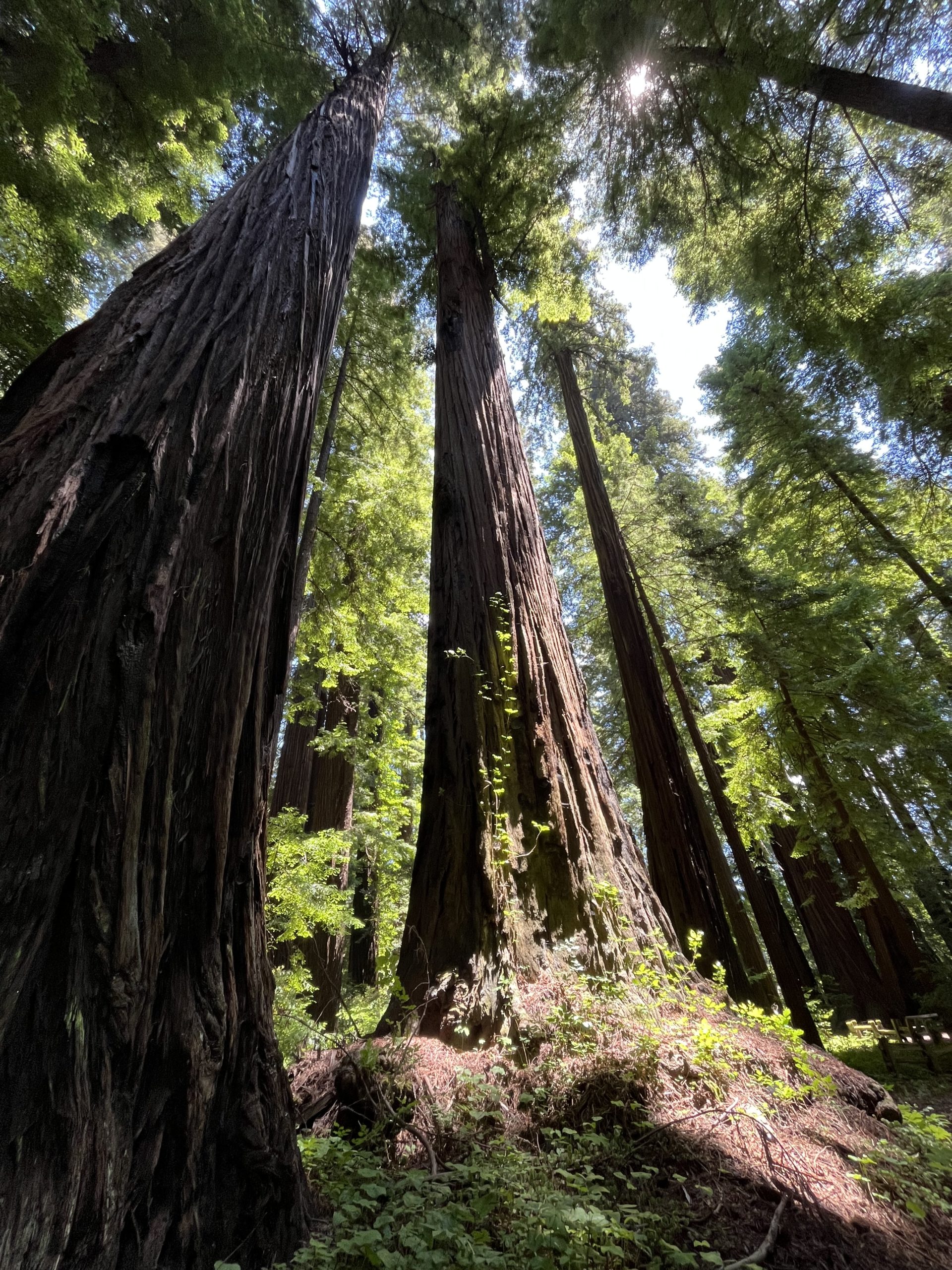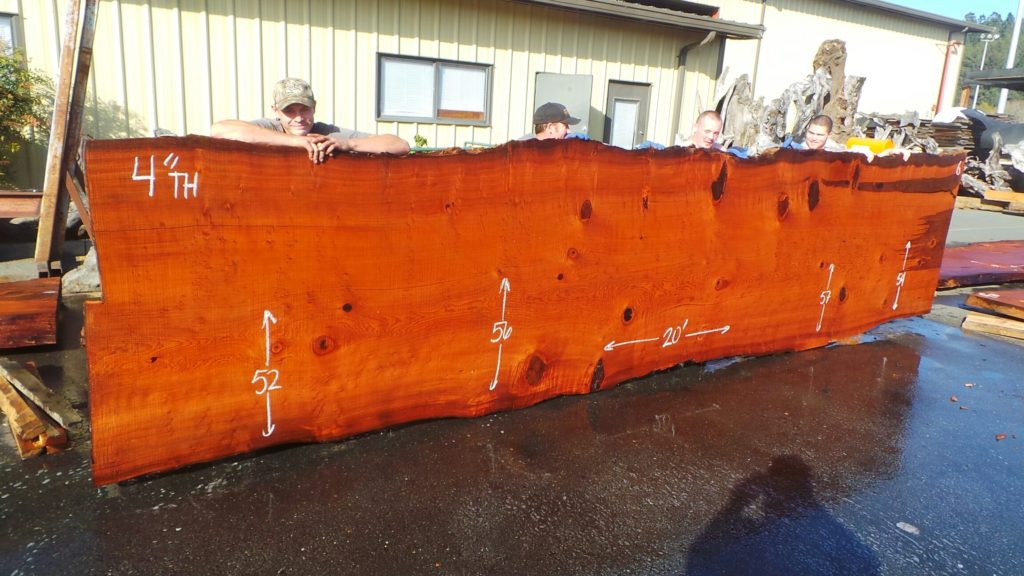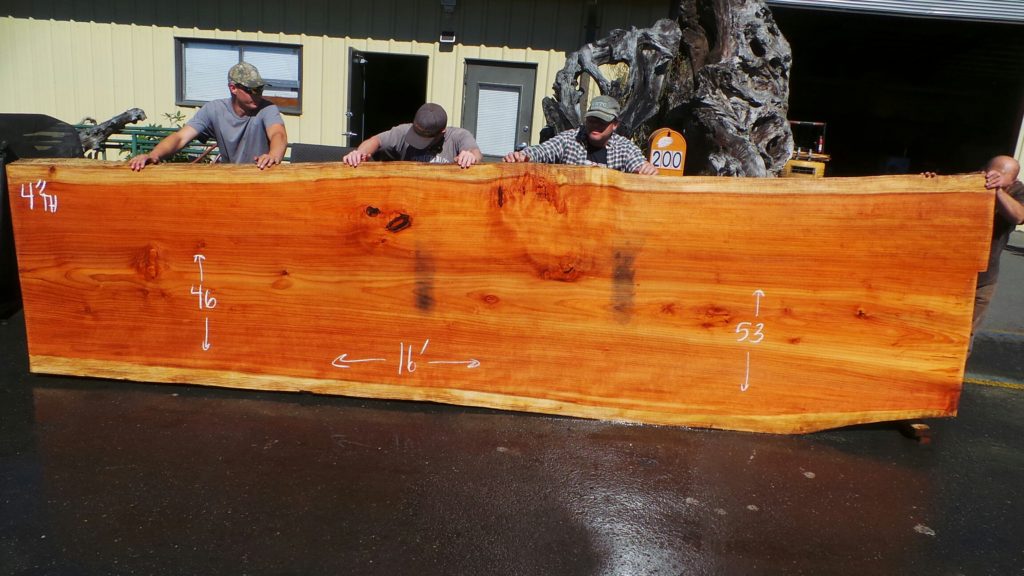
Old-growth redwood and new growth redwood can sometimes be hard to differentiate. In this blog post, we’ll discuss how to identify old-growth wood by visual appearance and texture.
Classifying Redwood
New growth redwood goes by many different names including but not limited to second growth, third growth, fourth growth, and young growth. By today’s standards, old-growth redwood is over 200 years old and has at least 8 grains per inch on a cross-section.
Old-Growth Redwood
Logging of old-growth redwood was completely halted in 1996 to preserve the species and was severely restricted for about ten years prior to that.
Most of the old-growth redwood that we use today is salvaged from the forest floor or reclaimed and repurposed. This wood was left lying on the forest floor up to 150 years ago during the initial logging operations. Some of the pieces left behind were too large to move with the transportation available at the time, and others were not of lumber/building quality. Companies like Redwood Burl Inc. are now able to salvage the wood that was once left to rot, providing old-growth redwood without harming any living trees.
The oldest living redwood (Sequoia sempervirens) is said to be at least 3000 years old. The tallest one towers at 379 feet. Early logging of these beautiful giants has taken their once great numbers to about 5% of their original total.
The debate continues on what constitutes true old-growth and what does not. There is a great deal of speculation and many opinions from varying sources on this topic. Redwoods can grow over 100 feet in their first 50 years, which makes it difficult to determine age by their height alone. The most accurate and easiest way to determine whether a redwood log is old-growth or not is by counting the growth rings.
Visual Appearance of Redwood
Visual appearances can also be used to determine the difference. For example, If you are looking at living trees, old growth’s bark is a much darker tone with a lot more texture and depth to it. Towards the base of very large old-growth trees, the bark can be over a foot thick. New growth’s bark is much thinner and brighter than old growth.
When looking at logs or slabs, old-growth has a deeper red tone and tighter grain. New growth is brighter and has a much wider grain. When we deal with salvaged old growth it is rare to find sapwood still on the log or piece of wood. This is because the sapwood is the first to rot off while the wood is lying on the forest floor. New growth almost always has intact sapwood, because it was not lying around long enough for it to rot off.
Differences When Finishing Redwood
The differences between old-growth and new growth are also very evident when it comes to woodworking and finishing. From my experiences working with both types, I feel that old growth is easier and nicer to sand/finish than new growth because of the grain structure and density of the wood. Old-growth is harder and has more depth and grain variation, including curly grain, burl, and combinations of both. New growth can also have some grain variation but it is not as intense.
We use mostly old-growth redwood for natural edge slab tables, fireplace mantels, bathroom vanities, coffee tables, and more. But we also carry some new growth redwood due to availability issues of old-growth. This lets us offer a less expensive option for our customers. Both types of redwood can look beautiful when finished – the choice between old growth and new growth is a matter of personal preference. Whether you are building a natural edge table or a fireplace mantel, keep us in mind for your project – both old growth and new growth redwood are great options!


Consider The Source When Buying Redwood
Another thing to take into consideration when sourcing old Growth redwood is where it comes from. We pride ourselves in making sure that every piece of wood we get comes from ethical sources, such as stumps on privately owned land salvaged from an earlier harvest and left in the woods for decades. Not every company follows these practices. Some people can cut the price just by eliminating all the ethics and buying slabs for pennies on the dollar. These slabs are sometimes cut from the sides of living trees and are cut based on value alone. They are also sold quickly for that reason – nobody wants to get caught with them. Ethical sourcing ensures that the wood you buy is high quality and sustainably collected.
We Cut All of Our Own Redwood Slabs
Here at Redwood Burl Inc., we cut all our own slabs. We then stack them and dry them for months – if not years – before putting them on the market. By doing so, we are able to account for all of our wood. We know that it came from reliable, sustainable sources. It is our hope that you will try to do the same. By salvaging redwood, we are taking an end-of-life product destined to be chipped, burned, or left to rot. We give these pieces a chance to live on as furniture to be enjoyed by generations to come.
Tags: burl wood, burl wood grain, Custom Burl Wood Furniture, reclaimed redwood, redwood burl, sustainable materials, types of burl wood